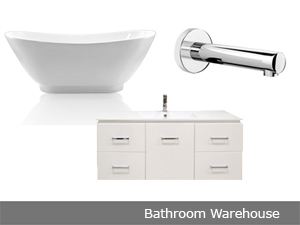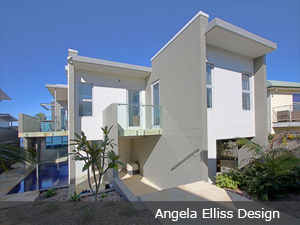Learn how to become an owner builder
Building your own home can be challenging at best and it is common for unexpected things to arise, complicating the course of works. But with home construction costs being so high today more people than ever before are taking the plunge, and learning to become "owner-builders".
This article will help you get started - from the initial design phase through to occupation.
Video
Learn how to become an owner builder
1. Become empowered!! (This is important stuff)
Who ever said that "knowledge is power" must have worked in the construction industry. It is
one of the golden rules of owner-building. The more you know about all aspects of your build the better your new home will be.
TIP: Remember, tradies may be professionals, but they are also just regular people just like you, with their own opinions on how things should be done. You need to have a good working relationship with all your tradies to ensure your vision comes to fruition with their help.
Have you ever dealt with a tradesperson and felt you were totally out of your depth? Felt like an idiot? Or thought "they are the experts and they know best"?
As an owner builder do not ignore your instincts. If you feel what a tradesperson has said doesn't sound right, question it. You'd be amazed at how often tradies are either wrong or ignorant about a new ways of doing things. Beware the trades person who says "It can't be done", this is often a sign of laziness or ignorance.
Women owner-builders are generally more vulnerable in the construction industry than male owner-builders. This is due to the fact that the trade industry is male dominated and tradies have a tendency to dominate situations when dealing with women that are less knowledgeable than they are. But remember this, generally speaking, women have an uncanny gift of knowing what looks and sounds right or wrong. Don't ignore your inner voice - you need to question everything you don't understand. Don't be afraid to ask lots of questions, this will give you more power and will help you earn the respect of the tradies you are working with. And don't let anyone rush you into a hasty decision that you will likely regret later.

Planit2d
will change the way you think. It is simply the fastest most user friendly,
2D Floorplan creator available on the App Store.
2. Getting Owner-Builder Information
So where can you get all the free information you require to become a "confident and well adjusted " owner builder? See below for the answer...
Council
Think of council as a wonderful free resource that is in business just to answer all your questions. Speak to the Customer Service Desk first, and then, if they can not help you, or you require more information, speak to the "On Duty Building Inspector" at your local council. They can answer loads of questions about construction and site information including such things as; insulation, boundary fences and bathroom surface falls, etc. If you can't get the answers you are looking for ask council who do they know that could help you.
Tradespeople
Ask lots of relevant questions wherever you go - bathroom retailers, hardware stores, kitchen manufacturers, plumbers and carpenters etc. If they want your business, and they usually do, all these professions and more will give you all the information you require. Trades are generally very happy to answer your list of questions to gain a contract but be very mindful of the time that goes into preparing written quotes. Tradespeople spend a considerable amount of their business time quoting, so ensure you really need a quote when you ask for one.
Books & Websites
The Home Design Directory (this website) has a series of articles entitled The Building Process which covers the entire house construction process. The articles include information on everything from legal requirements to electrical & plumbing. Our Further Reading section (below) has a list of links to the individual articles. In addition see the site map for a complete list of helpful articles.
There is a great book that is often handed by various Australian universities in first year university to those studying architecture and residential construction. It is called 'Building Your Own Home' and is written by George Wilkie. This book is aimed at people who know nothing about building, and is clearly written and easy to follow. This book can be found online at Booktopia and at many public libraries.
Your construction budget
Yes, you will need to set a budget for your build. There is nothing more disheartening than going through the whole owner process to realise that you have to sell your home because you have spent too much money. This is unfortunately all to common.
Realising early that construction prices always end-up costing more than you anticipated is a wise thing to keep in mind. There are a few ways to minimise the shock, and prepare you mentally as well as financially, for the process ahead.
a. Do some calculations
Firstly take a good look at our construction cost calculator. Note that the results vary greatly depending on many things including size of the home, quality of finishes, building complexity and site conditions. When using the calculator you will be provided with suggested sizes of rooms, so 'get handy' with a tape measure and compare the suggested sizes of spaces with spaces you can relate to in your current home.
1. Do these size spaces feel large enough? Remember don't over compensate with space it will only cost you more than you may want to spend.
2. Measure the furniture pieces that will go into your new home - will they fit into the spaces and shapes of the new rooms
b. Cost saving tips
You can reduce the construction costs of your home with a few of the following tips.
- Go to building supply auctions - advertised in your local paper or listed in the Yellow Pages .
- Never take the first quote - shop around and talk them down. You will be surprised how much suppliers will move on price if you ask; you have nothing to lose.
- Seconds outlets - scout your Yellow Pages or use Google to search for these under white goods, kitchens, tiles, etc.
- Cash and Carry outlets - these shops can sell everything from strawberry jam to ceramics basins, tiles, door stops, kitchen sinks, nails and hand tools... and the list goes on.
- Name brands - name brands are generally more expensive than lesser known brands and not always better quality. Shop around and be well informed before you buy.
Owner-builder insurance
The various insurance policies you will be required to obtain will vary from state to state. See our Further Reading section below to find the relevant owner-builder pages provided by your state government. You can also use google.com.au to search for an insurance broker who specialises in owner-builder insurance policies.
Owner-builder checklist
Once you have done your research you will need to start planning. Keep a scrapbook or diary so you can collect information and do your scheduling and planning in one place. Below is a checklist to help get you started:
- Read our articles describing the entire Building Process.
- Engage a building designer to draw up plans. Note: There is no reason you can not prepare the initial design-drawings yourself - see: DIY Home Design for more information. Alternatively download the free e-book entitled Designing Your Own Home.
- Call your local council and ask to speak with the 'On Duty Building Inspection'. Ask them what you need to submit in your Development Application (DA), and what council documents you should read to ensure you understand what is required. Once you have submitted your DA and it has been approved you will need to submit another set of plans to obtain a Construction Certificate (CC). Insure that you add any DA specified conditions to you CC application. Note: You can submit these two applications together if you are 100% confident that the construction process will be simple and will not effect neighbours.
- Read through the Development Control Plans (DCP's) and Local Environmental Plans (LEP's) and any other Council or regulatory body documents that may pertain to your property. Ask council about these.
- Once you have you DA and CC drawings approved and stamped put your plans out for tender. Ensure you include a building specification with your plans so that everyone is quoting on the the same finishes and detail. Choose your tradespeople on price as well as communication skills (this is extremely important). After you have selected winning bids you can start discussing cost savings. Do not discuss cost savings during the quoting processes - it will makes the quotes difficult to compare.
- Once you have chosen your tradespeople and know the total construction cost you will need to obtain Home Warranty Insurance and your Owner Builders Licence. Search online for these.
- Once you have your Home Warranty Insurance and your Owner Builders Licence you will need to prepare the construction site. The information you read in The Building Process will now start to be relevant.
Being an Owner Building can be a very stressful but also an incredibly satisfying journey. You must keep a firm handle on the project and become very well managed so there are no surprises.
Further reading
DIY home design. The complete home design process fully explained.
Seven deadly sins of home design. What not to do when designing a home.
State government authorities:
- Becoming an owner builder (NSW Dept. of Fair Trading)
- Consumer Affairs Victoria
- Queensland Building and Construction Commission
- Owner Builder, SA
- Western Australia Builder Reg. Board
- Owner Building, TAS (Tasmania Workplace Standards)
- Owner Builder Manual, NT (Northern Territory Bldg Practitioners Board)
- Owner-builders licensing (ACT/Canberra Planning and Land Authority)
The building process fully explained... This set of articles is written by an architect for owner-builders and property owners hiring a builder who want to familiarize themselves with the home construction process.
Make your home warm & cosy in winter & cool in summer. Read about cost saving methods and products available in Australia to keep your new home thermally comfortable all year without using lots of electricity or gas.
|
Home design and renovation tips Home design and construction process |
Questions?

| We have a free service on our Q&A page. Practicing professionals will try their best to answer any relevant questions you may have. You can also ask questions on facebook. |






